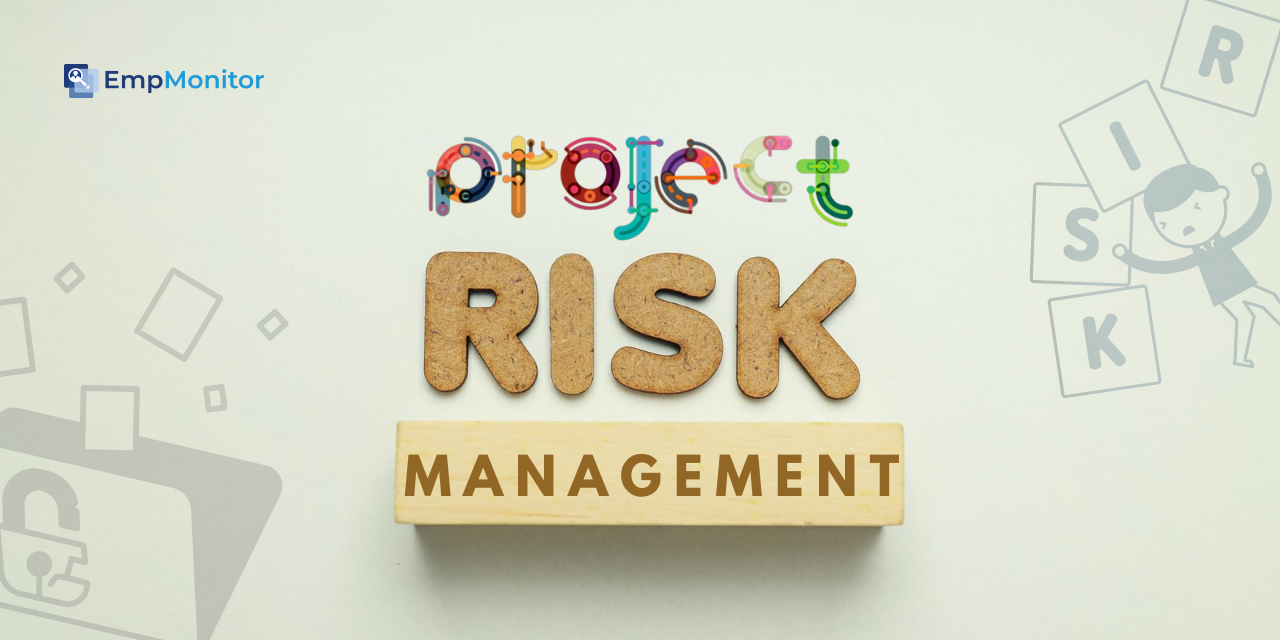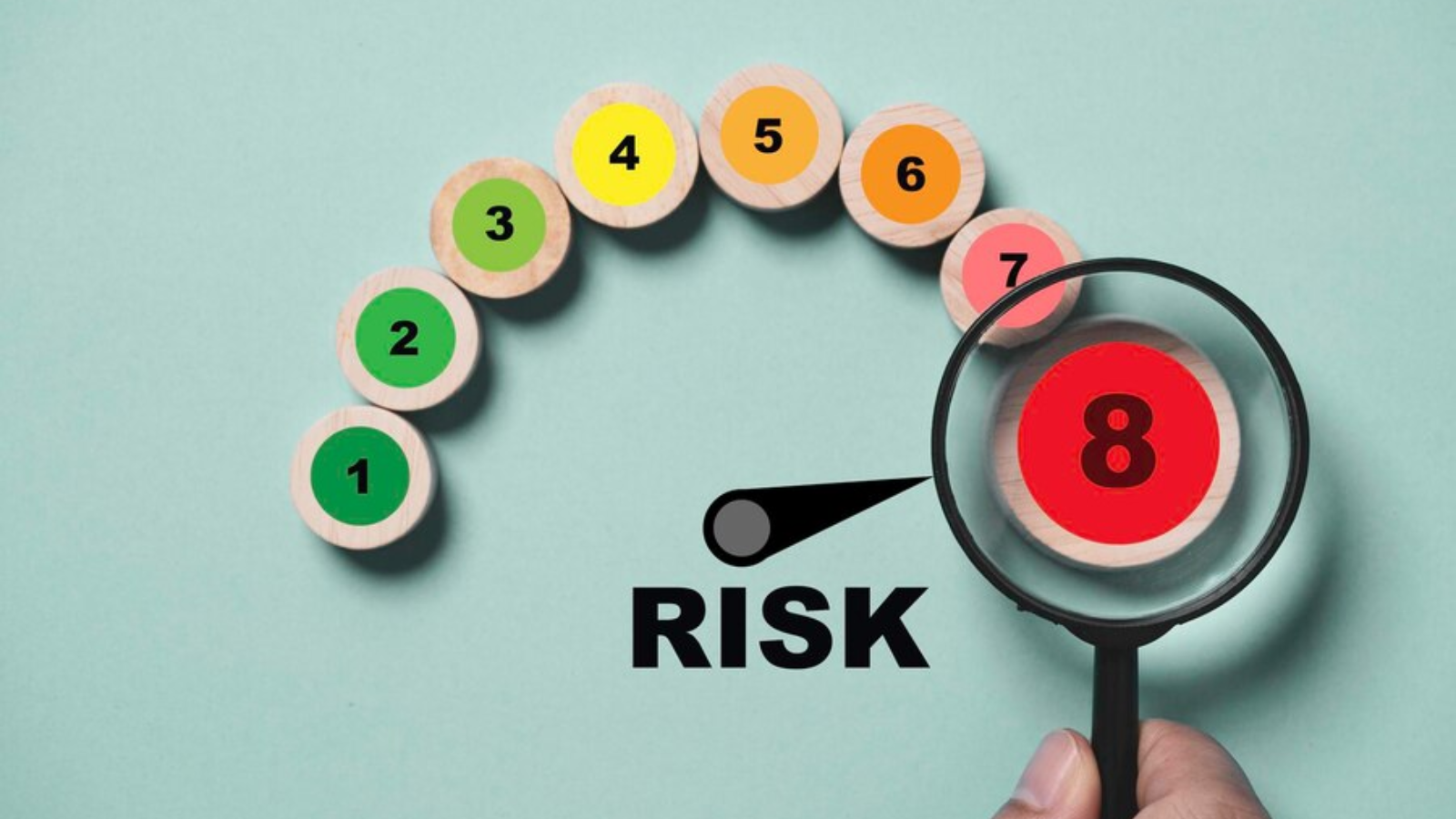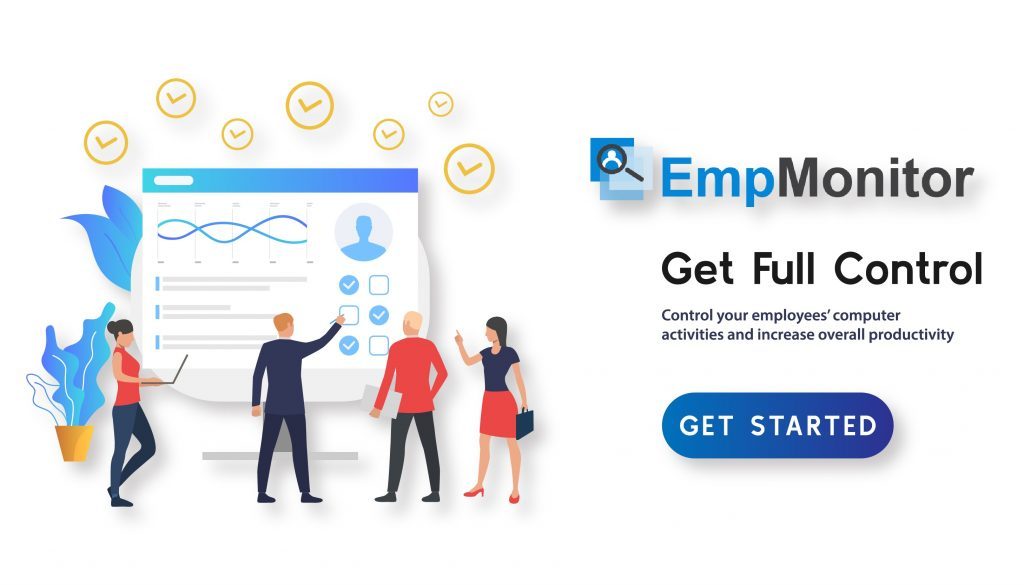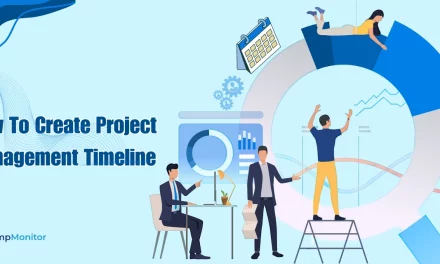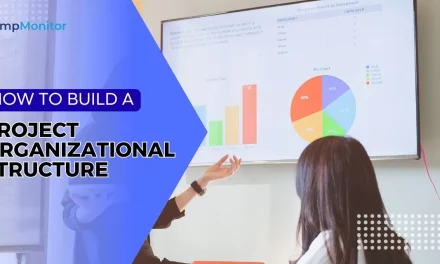Step into the dynamic world of project management, where each endeavor is a unique journey full of challenges, uncertainties, and, most importantly, opportunities. Acknowledging that success hinges on our adept navigation of the intricate landscape of project risks, this blog is your guide to unraveling the complexities of project risk management.
Beyond a mere procedural step, risk management is a strategic process that distinguishes project success from unforeseen setbacks. Delving into its depths, we’ll explore foundational principles alongside the advanced tactics experienced project managers use this method to identify, analyze, and mitigate risks. Additionally, we’ll shed light on essential tools like project monitoring software for efficient risk management.
Whether you’re an experienced professional or just starting, this blog aims to provide you with extraordinary insights. Join us as we uncover hidden strategies and pitfalls to avoid and provide tools for effortlessly transforming challenges into triumphs. Buckle up for a discovery of strategies that will elevate your project management prowess. Ready to unlock your project’s potential? Let’s dive in!
Hit ‘Play’ Button & Tune Into The Blog!
Risk Vs. Issues In Project Management
Risks:
Risks are potential future events or circumstances that may have a negative impact on the project’s objectives. They are uncertainties that, if realized, could hinder the project’s progress. In project risk management, teams identify and analyze risks to proactively develop strategies for mitigation. Risks are inherently uncertain and may or may not occur.
Issues:
On the other hand, issues are current problems or challenges that have already materialized and are affecting the project. Unlike risks, issues are events that are happening or have happened and are actively impacting the project’s performance. Issues require immediate attention and resolution to prevent further negative consequences.
Impact Of Risks On Project Aspects
Project risks have a pervasive influence, touching upon various critical aspects of a project, including:
- Budget: Risks have the potential to alter the financial landscape of a project, necessitating adjustments in the allocated budget. Unforeseen events may lead to increased costs or resource reallocations.
- Schedule: Schedules and timelines are susceptible to disruptions caused by risks. Unanticipated challenges can result in delays or the need for on-the-fly adjustments to the project timeline.
- Scope: The scope of a project is vulnerable to changes due to risks, leading to what is known as scope creep. Initial project goals may expand or deviate from the original intentions.
Risks come in various forms, including:
- External Risk: Beyond the project team’s control, examples include vendor delays or unpredictable weather.
- Internal Risk: Within the project team’s control, instances include missed deadlines, budget inaccuracies, or data loss or theft from internal employees. Businesses can implement project management software, like EmpMonitor, to track and record project progress.
- Positive Risk (Opportunity): Not all risks are bad. Opportunities, or positive risks, can lead to early task completion, staying under budget, or surpassing original goals. These can arise from increased team efficiency or external factors like policy changes.
Understanding these risk categories is vital for effective project risk management.
What Is Project Risk Management?
Project Risk Management is the strategic process of identifying, analyzing, and mitigating potential obstacles that might affect a project’s success. In the dynamic field of project management, uncertainties are inherent. The objective of project risk management is not to eliminate these uncertainties but to navigate them adeptly, transforming challenges into opportunities.
Risk management in project management includes the following steps:
- Risk Identification: Project managers meticulously identify potential risks arising from project scope, team dynamics, external factors, and technology challenges, gaining a clear picture of potential hurdles.
- Risk Analysis: Each identified risk undergoes a detailed analysis, evaluating probability, impact, and interplay. It enables prioritization and effective resource allocation.
- Mitigation Strategies: Armed with insights, project managers develop proactive strategies to minimize the impact of risks, including contingency plans and alternative approaches.
- Continuous Monitoring: Project risk management is an ongoing process. Continuous monitoring allows teams to adapt strategies as the project evolves, ensuring alignment with dynamic project needs. Employee monitoring tools like EmpMonitor help in monitoring project progress.
By leveraging the real-time data and insights provided by EmpMonitor, teams can proactively address challenges and enhance project efficiency.
Types Of Project Risk Management
Project Risk Management comprises various types, each catering to specific facets of the dynamic and uncertain project environment. A comprehensive understanding of these types is essential for devising a thorough approach to mitigate potential challenges. Here are the key categories:
Strategic Risk Management: Focuses on aligning project objectives with overall strategic goals, assessing risks that may impact the project’s alignment with the organization’s broader mission.
Operational Risk Management: Concentrates on day-to-day project activities, identifying and addressing risks associated with execution, resource management, and task completion.
Financial Risk Management: Deals with uncertainties related to budgeting, funding, and financial resources, ensuring the project stays within budget constraints and minimizes financial impact.
External Risk Management: This Project risk management technique focuses specifically on risks outside the control of the project team, including contracted vendors, policy changes, and geopolitical factors that may influence project outcomes.
Schedule Risk Management: Addresses potential delays and timeline disruptions, involving proactive strategies to prevent or mitigate schedule-related issues.
Technological Risk Management: Focuses on risks associated with technology adoption, integration, and innovation to ensure technological uncertainties do not hinder project success.
Human Resource Risk Management: Project risk management that addresses risks related to the project team, including skill gaps, turnover, and team dynamics, ensuring a skilled and cohesive project team.
Communication Risk Management: Centers on potential breakdowns in communication channels, both internal and external, to prevent misunderstandings and ensure efficient information flow.
Environmental Risk Management: This type of project risk management addresses risks related to the physical environment, such as weather conditions, natural disasters, or geopolitical factors that may impact the project.
By systematically addressing these types of risks, project managers can tailor a robust risk management strategy to meet the unique challenges of their projects.
Secret Strategies For Mitigating Risks
Effectively mitigating project risks involves proactive planning and strategic decision-making. By implementing robust mitigation strategies, project teams can minimize the impact of potential challenges. Here are key strategies for mitigating risks:
Risk Avoidance: Identify high-impact risks and take measures to avoid or eliminate them from the project. This strategy is applicable when the risk’s potential impact is too severe to manage.
Risk Transfer: Shift the responsibility for a portion of the risk to external parties, such as insurers, subcontractors, or partners. Teams can use contractual agreements for this.
Risk Reduction: Implement measures to reduce the likelihood or impact of identified risks. It may involve improving processes, enhancing team skills, or incorporating new technologies.
Risk Sharing: Collaborate with stakeholders to share the impact and responsibility of certain risks. Shared ownership fosters a collective commitment to addressing and mitigating risks.
Contingency Planning: Develop contingency plans to address specific scenarios if identified risks materialize. It involves having predefined actions and resources ready to deploy when needed.
Monitoring: Establish a robust monitoring system to track the evolving nature of risks throughout the project lifecycle. Continuous monitoring enables timely adjustments to mitigation strategies. Employing project management tools like EmpMonitor can effectively help in monitoring.
Learn from Past Projects: Leverage insights from past projects, especially those with similar characteristics or challenges. Analyzing historical data enhances the ability to foresee and mitigate potential risks.
By incorporating these strategies into the project risk management process, project teams can navigate uncertainties and increase the likelihood of achieving successful project outcomes. Teams can create an effective risk management plan template using these strategies.
Moreover, utilizing workforce management tools like EmpMonitor can help you in managing project risks and challenges. Such tools have features that provide you the detailed insights about ongoing projects and aid with risk management. It enables teams to develop a proactive approach, enhancing their ability to identify, analyze, and efficiently mitigate risk.
EmpMonitor: Workforce Management Software
As organizations strive for project execution excellence, incorporating project management software such as EmpMonitor into the project risk management process is extremely beneficial. By utilizing its features, project teams can foster a culture of proactive risk identification, analysis, and mitigation, resulting in more successful project results.
Some Key Features Of EmpMonitor Include:
Real-time Activity Monitoring:
EmpMonitor provides live visibility into employee activities, aiding project managers in identifying risks proactively and aligning with risk management principles.
Productivity Analysis:
This project management tool provides in-depth analysis and assists project managers in identifying patterns and potential risks related to team efficiency, empowering decision-makers to implement mitigation strategies.
Time Tracking and Task Management:
It facilitates precise time tracking, which is crucial for mitigating schedule-related risks and ensuring projects stay on track.
Screenshot Monitoring:
Real-time capture of screenshots offers visual evidence, enhancing transparency and aiding in identifying risks associated with unauthorized activities.
Customizable Alerts:
EmpMonitor’s alert system notifies unusual activities, aligning seamlessly with project risk management principles.
Keystroke Logger for Enhanced Security:
Built-in logger enhances security by monitoring every keystroke, identifying potential threats, and contributing to a robust risk management strategy.
Data Loss Prevention (DLP) Capabilities:
Its DLP features safeguard against unauthorized data access, ensuring confidentiality and mitigating risks associated with data theft.
Web and App Usage Monitoring:
Comprehensive monitoring mitigates risks related to unauthorized online activities, ensuring security compliance and reducing data exposure risks.
Employee Behavior Analytics:
Understanding behavior is crucial for mitigating risks related to team dynamics and contributing to effective risk management strategies.
EmpMonitor seamlessly integrates with project risk management methodologies, enhancing the overall framework. The data-driven approach aids informed decision-making, strategic resource alignment, and timely risk mitigation.
Stay ahead of potential risks and ensure project success with real-time monitoring and actionable insights from EmpMonitor.
Read More
7 Smart Ways To Tackle Challenges In Project Management
8 Reasons To Invest In Enterprise Project Management Software
How To Pick Monitoring Software With 7 Best Project Management Features?
Final Thoughts
Mastering the intricacies of project risk management is crucial for achieving unparalleled success and overcoming challenges in project management. This blog has unveiled the secrets of effective risk management, guiding both seasoned professionals and newcomers toward a transformative journey. From foundational principles to advanced strategies, we’ve explored the tools and tactics that empower project teams to actively identify, analyze, and mitigate risks.
As we conclude, it’s crucial to view risks not as roadblocks but as opportunities for growth. By integrating cutting-edge solutions like EmpMonitor into your risk management toolkit, you elevate your projects to new heights with real-time insights driving informed decision-making every step of the way.
Embrace the insights gained, uncover the hidden potential within your projects, and transform obstacles into opportunities.

